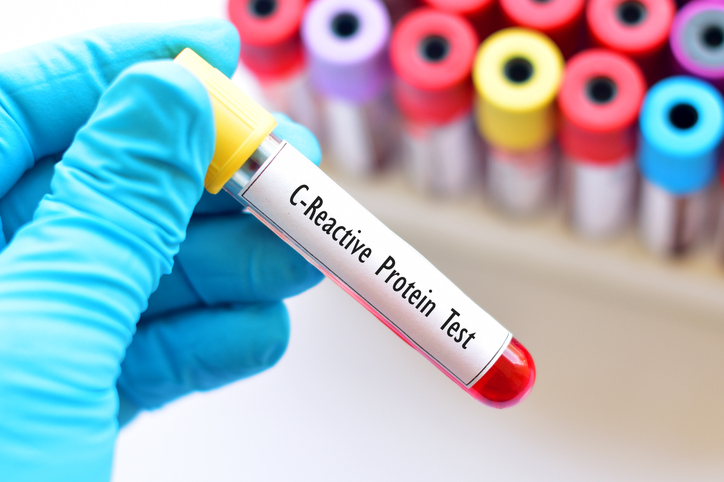CRP, Cardiovascular Disease and Periodontal Disease: A Triad Of Trouble
By now many of you have heard of the CRP (C-Reactive Protein) blood test that is widely available and routine on most medical check-ups. Its name is derived from the observation that it binds to the C polysaccharide of Strep Pneumonia and helps the body rid of it. It has been observed that it also binds to dead cells in the body and helps to have them removed from the body. (1) Since then, it has been used as a sensitive systemic marker of general inflammation and tissue damage. It is nonspecific, so once an elevated CRP is found, the clinician must determine where the inflammation is coming from.
Normally, physicians use a result below 3 mg/L to indicate health. As a functional medical practitioner, I believe 1 mg/L should be the cutoff point. CRP values between 3 and 10 mg/L may indicate cigarette smoking, hypertension, obesity, or another relatively minor inflammation. Elevated levels of C-reactive protein can be found in both acute and chronic inflammatory states. (2) Elevated C-reactive protein may be found after trauma or infarction and during the course of certain cancers. Any stressor can raise C-reactive protein levels. (3)
Both periodontal disease and cardiovascular disease individually affect almost 50% of all Americans. (4,5) As you know from my previous article here, periodontal disease represents an infection of the gums and bone surrounding the teeth. Cardiovascular disease is comprised of coronary heart disease, heart failure, stroke and high blood pressure. Coronary artery disease has also recently been linked too low-grade infections and inflammation. (6) A 1995 study concluded that dental health was a significant predictor of coronary events. Other significant predictors were the presence of diabetes, the number of previous myocardial infarctions, and the body mass index. (7) All of these conditions will present with elevated CRP levels. (8,9,10,11,12)
There is no one hypothesis demonstrating a direct cause and effect between periodontal disease and cardiovascular disease. Several studies have found the presence of bacteria responsible for periodontal disease in arterial plaque. (13) Studies have concluded that the more severe the periodontal disease, the greater the risk for cardiovascular disease. (14) I have my own ideas about the correlation which you can read about here.
The detection of Periodontal disease is straightforward and does not require the use of a CRP test. After I diagnose periodontal disease and treat it, CRP levels will decrease. (15) Successful treatment of periodontal disease has been shown to decrease the severity of cardiovascular disease. (16,17)I feel very strongly that once periodontal disease has been eliminated, a CRP test can be very useful in determining whether there is still an undiagnosed problem in the body. Since cardiovascular disease is so prevalent, it may be the likely source of elevated CRP. In my practice, I consider treating periodontal disease and Cardiovascular disease as a parallel process. If you have one, you may have the other.
Aside from the standard treatments for gum disease and cardiovascular disease like surgery, medications and stent placement, preventive measures should take a front seat for both. Proper breathing (O₂ levels), nutrition, sleep, sunlight, movement, stress management, and good relationships are the key to treating and preventing both conditions. For more information on how you can improve all of these areas of you life, read my previous post here. If you have not had a cleaning in a while, please call your dentist; it could save your life!





